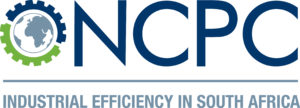Cape Town — Agri-processing businesses can enjoy the benefits of clean, resource-efficient production at little to no cost, according to a new report by the National Cleaner Production Centre South Africa.
South Africa’s agri-processing sector formally employs more than 500 000 people, while contributing about 4% to the total GDP. But it’s a resource-intensive business, relying heavily on water and energy – two commodities that are already in short supply in the country.
“Agri-processing uses a lot of water,” says Lindani Ncwane, senior project manager at the National Cleaner Production Centre South Africa (NCPC-SA). “It’s the nature of the sector. Water is used in the production process, but it’s also needed to keep facilities clean and in line with the high hygiene standards.”
The NCPC-SA is tasked and funded by South Africa’s Department of Trade, Industry and Competition to ensure that industries are supported in the just transition to a greener economy. “We celebrated our 20th anniversary last year, so we’ve been working with local businesses for many years now,” says Ncwane.
In late 2023 the NCPC-SA, in partnership with the International Federation Corporation (IFC) and the Swiss State Secretariat for Economic Affairs, released a report titled Resource Efficiency for the Cheese and Yoghurt Dairy Sector in South Africa.
The study drew on data sourced from assessments conducted by the IFC at six sites and other assessments that were done by the NCPC-SA over the past decade, and identified opportunities for improved resource consumption and management within those specific sub-sectors, which use an estimated 8.7 million kilolitres of water per year.

Crucially, the study did not look at water usage in isolation. “The resource-efficiency benchmarking study focused on the water-energy nexus, so it looked at electrical energy, thermal energy and water usage,” explains Ncwane.
“That’s important because one of the significant energy users in industry is also one of the significant water users – namely, boiler systems. If you can optimise your boiler, you’ll save on fuel costs, fuel consumption and water consumption. And then you start looking at things like your steam condensate recovery, which is another key area of saving.”
Ncwane cites the example of a business that was able to reduce its overall water consumption by 15% by increasing its volumes of recovered condensate from 30% to 85% recovery. “That just shows how important the water-energy nexus is to these industries,” he says.
The resource-efficiency benchmarking study revealed a potential 60% reduction in potable water consumption for South Africa’s dairy sector, which has an estimated rand value of about R138 million to R200 million per year. “The study also suggests that a 25% to 30% reduction in electricity consumption is possible with a cost savings of up to R500 million per year,” says Ncwane.
“Fuel consumption could be reduced by up to 30% and a 50% reduction in greenhouse gas emissions of fossil fuels, assuming a 50% uptake in the switch in fuels, which would result in a R180 million saving per annum. There is huge potential for the dairy sector to reduce its resource consumption. In doing so it will reduce its environmental footprint and ultimately become more sustainable and more competitive. In that way, water and energy efficiency has a multiplier effect, in that the savings accrued can be invested back into the business.”
All of this is remarkably easy to achieve, says Ncwane. “Some of these savings are possible with little to no capital investment. Repairing compressed air leaks, for example, has a very high and very quick return on investment. Should a dairy processor opt to completely transform with a much larger capital investment, they might consider installation of an effluent plant to solve effluent discharges that are held to municipal compliance. This, also, has a very high return on investment.”
However, he says, the NCPC-SA’s recommended changes require the full attention and commitment of business leadership. “In our experience, whenever we’ve approached an industry or a project we have required the support of management to succeed in the journey,” he says.
“You need to be willing to participate and to allocate resources in order to see the positive results of our recommended interventions. Our recommendations typically range from low-cost interventions to medium- or even high-cost investments, but we always recommend starting with a low-cost or no-cost option. Implement those interventions first and, when you start to see the benefits, you can then progress to the more significant capital investment plans.”
Either way, Ncwane concludes, the benefits of implementing water-efficiency interventions far outweigh the effort.
Follow African Insider on Facebook, Twitter and Instagram
Picture: Supplied
For more African news, visit Africaninsider.com
Compiled by Matthew Petersen



